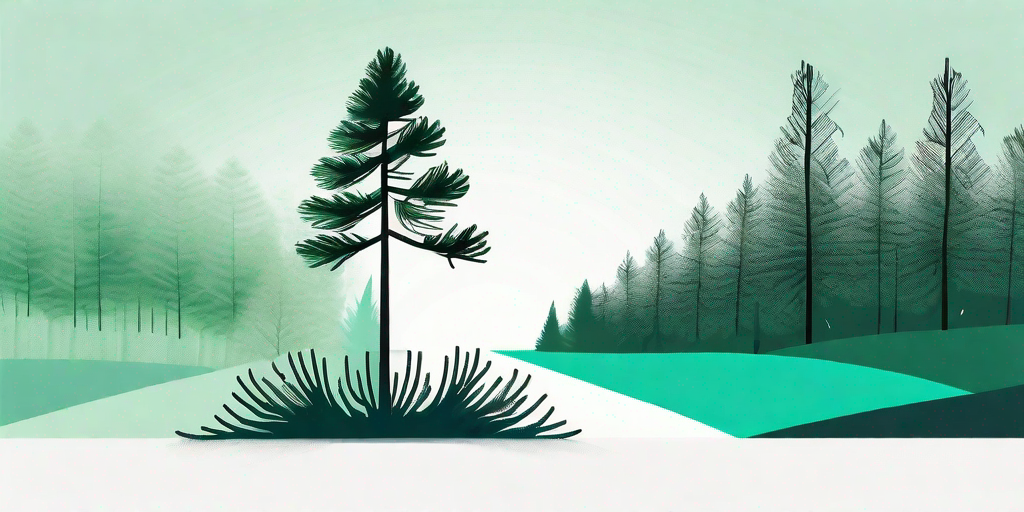
If you're a tree lover like me, you might have noticed that your beloved pine tree is starting to look a little...well, under the weather. Fear not, my fellow dendrophiles, for I am here to guide you through the process of nursing your pine tree back to health, and stopping that pesky bottom-up decline.
Understanding the Bottom-Up Decline
Before we dive into the nitty-gritty of tree-saving, let's take a moment to understand what we're dealing with. Bottom-up decline, also known as 'dieback', is a common issue faced by pine trees. It's like a bad haircut that starts at the bottom and keeps going until your tree is left with nothing but a tuft at the top. Not exactly the look we're going for.
Now, you might be thinking, "Why, oh why, is my tree losing its luscious locks?" Well, the answer is usually a combination of environmental stressors and pests. Drought, poor soil conditions, and pesky beetles can all contribute to your tree's decline. But don't despair, dear reader, for every problem, there's a solution. Or in this case, several solutions.
Identifying the Culprit
Just like in a good detective novel, the first step to solving our tree's problem is identifying the culprit. Is it a drought? Poor soil? Or perhaps a beetle with a vendetta against your tree? Let's find out.
Checking for Drought
Drought is a common cause of bottom-up decline. If your area has been experiencing less rainfall than usual, or if your tree's leaves are wilting, this could be the cause. But don't just take my word for it, check the soil! If it's dry and crumbly, your tree might be thirstier than a camel in a desert.
Examining the Soil
Soil conditions can significantly impact your tree's health. If your soil is more packed than a can of sardines, or if it's lacking in nutrients, your tree might be struggling. You can test your soil's nutrient levels with a soil test kit, available at most garden stores. It's like a health check-up for your soil!
Looking for Pests
Finally, pests like beetles can cause significant damage to your pine tree. If you notice small holes in the bark or a sawdust-like substance at the base of your tree, you might have a beetle problem. But don't worry, we're not going to let a bunch of bugs bully our tree!
How to Save Your Pine Tree
Now that we've identified the problem, let's roll up our sleeves and get to work. Here are some steps you can take to save your pine tree from bottom-up decline.
Watering Your Tree
If drought is the issue, the solution is simple: water your tree! But remember, too much of a good thing can be harmful. Overwatering can lead to root rot, which is like a cold for trees. Aim for a deep watering once a week, but adjust based on rainfall and temperature.
Improving Soil Conditions
If your soil is the issue, consider adding organic matter like compost or manure to improve its texture and nutrient content. It's like giving your tree a gourmet meal! You can also consider adding a layer of mulch around your tree to help retain moisture and regulate soil temperature.
Controlling Pests
If pests are the problem, consider using a tree-safe insecticide or calling in a professional. Remember, it's not about revenge, it's about protecting your tree. Although, squashing a few beetles can be quite satisfying...
Preventing Future Decline
Now that we've saved your tree, let's make sure it stays healthy. Here are some tips for preventing future bottom-up decline.
Regular Watering
Just like you and me, trees need regular hydration to stay healthy. Make sure to water your tree regularly, especially during dry periods. But remember, moderation is key!
Soil Maintenance
Keep an eye on your soil conditions. Regularly add organic matter to keep it nutrient-rich and well-drained. Your tree will thank you!
Pest Control
Keep an eye out for pests and deal with them promptly. Regularly check your tree for signs of infestation and take action as needed. Remember, the best defense is a good offense!
FAQs
- How can I tell if my pine tree is suffering from bottom-up decline?
Look for signs like browning needles, loss of lower branches, and reduced growth. If you notice these symptoms, your tree might be in trouble.
- Can I save my tree if it's already showing signs of decline?
Yes, with prompt action and proper care, you can often reverse bottom-up decline and save your tree.
- How can I prevent bottom-up decline in the future?
Regular watering, soil maintenance, and pest control can all help prevent future decline.
So there you have it, folks. With a little detective work and some TLC, you can save your pine tree from bottom-up decline. Now go forth and be the tree-saving hero you were born to be!















